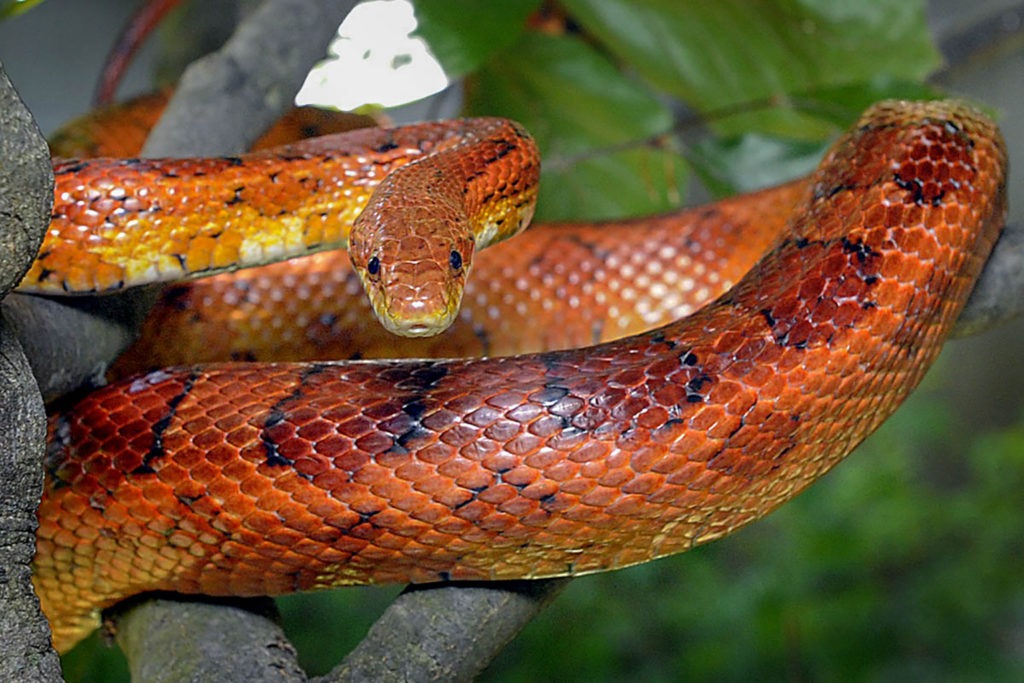Overview
“Where I live”
Corn snakes live in the eastern United States from southern New Jersey south to Florida and west to Louisiana and parts of Kentucky. They are one of 27 species of snake found in Maryland, but are more common further south. They inhabit meadowlands and wooded groves, especially sandy pine and scrub oak woods.
At The Maryland Zoo, corn snakes can be seen in the Giant Tree in the Maryland Wilderness area. Corn snakes are also featured in the Zoo’s traveling Animal Embassy collection. As Animal Ambassadors, they figure prominently in Zoo education programs on and off grounds.
“How I live there”
Corn snakes mostly stay out of sight, hiding beneath logs, rocks, and other readily available shelter during the day. They are frequently found in woodlots or along abandoned railroads where they use rotting ties as shelter. They feed every few days on mice, rats, birds, bats, and lizards. They will climb trees, visit trash piles, and enter abandoned buildings in search of prey. They also go underground into rodent burrows to hunt. They are non-venomous constrictors that kill their prey by squeezing and suffocating.
“Making my mark”
Corn snakes, like all snakes, play an important ecological role in their environment and should be respected for that, rather than feared or harassed. They help maintain the balance of nature by being both predator and prey. Corn snakes are among those snakes most often considered helpful to humans because they hunt rodents.
“What eats me”
Corn snakes, like most snakes, are both predator and prey for many animals. Raptors are among their likely predators.
Raising Young
Female corn snakes lay clutches of 10-20 eggs in rotting stumps, piles of decaying vegetation, or other locations with sufficient heat to incubate them. They deposit their eggs between late May and July and then abandon them. Gestation lasts 60 to 65 days. Hatchlings are 9.5 to 15 inches long at birth and reach an eventual adult length of two to six feet.
Conservation
Corn snakes are not listed as federally endangered. They are considered a species of special concern in Florida because they face habitat loss and destruction in the lower Keys. They are often mistaken for copperheads and killed. They are also popular pets, and may be collected from the wild for the pet trade. This practice is illegal in Maryland, where all native snakes are protected by the Nongame and Endangered Species Conservation Act. Snakes native to Maryland cannot be killed, possessed, bred, or sold without first acquiring the proper permit from the Maryland Department of Natural Resources. Additionally, Maryland requires a Captive Reptile and Amphibian Permit for the possession, breeding, and sale of native reptiles and amphibians in the state.
Taxonomy
- Kingdom: Animalia
- Phylum: Chordata
- Subphylum: Vertebrata
- Class: Reptila
- Order: Squamata
- Family: Colubridae
- Genera: Pantherophis
- Species: guttatus


